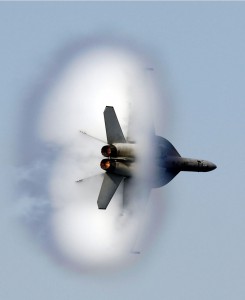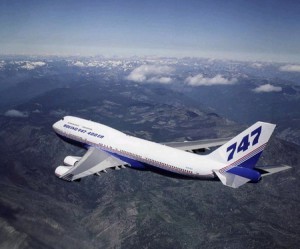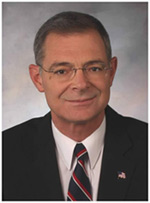Aerospace Vehicle Performance
 The Aerospace Vehicle Performance (AVP) professional short course provides participants with a thorough training experience in the fundamentals of propeller-driven and jet-propelled aircraft flight performance.
The Aerospace Vehicle Performance (AVP) professional short course provides participants with a thorough training experience in the fundamentals of propeller-driven and jet-propelled aircraft flight performance.
Course material explores the manner in which the primary driving forces of thrust, lift, drag, and weight profoundly affect aircraft flight performance. This includes the key performance factors of range, endurance, maximum climb rate and load factor capability as functions of Mach number and altitude.
Addressed and clearly explained are the topics of thrust-required and thrust-available for jet-powered aircraft and power-required and power-available for propeller-driven aircraft. Key flight states addressed include steady, level flight and climbing flight. Aircraft horizontal and vertical turning flight performance are highlighted as well. The relevance of the V-n diagram in aircraft structural design is thoroughly explained.
Participants will come to understand and apply the powerful principles of Energy Maneuverability in planning aircraft minimum time-to-climb and minimum fuel-to-climb schedules. They will also acquire the knowledge and skills to accurately estimate aircraft take-off and landing performance. With these and other simple tools, participants will be better equipped to estimate the performance of a wide variety of general aviation, commercial, military and special purpose aircraft missions.
Save
- The Aircraft Drag Polar
- Prop-Driven Propulsion
- Turbojet Propulsion
- Turbofan Propulsion
- Thrust-Required
- Power-Required
- Thrust-Available
- Power-Available
- Steady, Level Flight
- Rate-of-Climb
- Gliding Flight
- Horizontal Turning Flight
- Vertical Turning Flight
- V-η Diagram
- Range
- Endurance
- Energy Management
- Take-Off Performance
- Landing Performance
- Atmospheric Properties
- Air Data Parameters
- Historical Flight Programs
 The Aerospace Vehicle Performance (AVP) short course is an intensive 4-day training program that provides a maximum training experience to aerospace professionals with minimum time away from work.
The Aerospace Vehicle Performance (AVP) short course is an intensive 4-day training program that provides a maximum training experience to aerospace professionals with minimum time away from work.
Aerospace Vehicle Performance Module Overview
- Aerodynamics of the Airplane: Lift, drag, moment, aerodynamic center, aero force and moment coefficients, lift and drag build-up, drag polar.
- Powerplant Characteristics: Thrust efficiency, reciprocating engine/propeller combinations, turbojets, turbofans, turboprops.
- Thrust-Required: Flight forces, equations of motion, steady level flight, thrust-to-weight ratio, wing loading, lift-to-drag ratio.
- Thrust-Available, Power-Required and Power-Available: Propeller-driven aircraft, jet-propelled aircraft, altitude effects, velocity effects, steady level flight.
- Drag Divergence, Minimum Velocity and Rate-of-Climb: Critical Mach number, Mach number at Drag Divergence, absolute ceiling, gliding flight, powerplant effects.
- Time-to-Climb, Range and Endurance: Range, endurance, specific fuel consumption, powerplant effects, minimum horsepower, minimum thrust, winds.
- Turning Flight: Horizontal turning flight, minimum turn radius, maximum turn rate, vertical turning flight, pull-up, push-over.
- Accelerated Flight Performance: Load factors, maneuver point, corner velocity, energy management, energy height, specific excess energy.
- Take-Off and Landing Performance: Ground roll distance, airborne distance, approach distance, flare distance, powerplant effects.
- Philosophy of Aircraft Design: Conceptual, preliminary design and detail design, weight estimation, performance estimation, constraint diagram.
Save
This course is best suited for individuals having a working knowledge of aircraft flight mechanics, aerodynamics, and airbreathing propulsion.
General Requirements
- Algebra
- 1st Year College Calculus
- 1st Year College Physics
- Basic Aerodynamics
Suggested WEA Preparatory Courses

J. Terry White terry@whiteeagleaerospace.com Curriculum Vitae
J. Terry White is the founder, senior advisor and former president of White Eagle Aerospace. His 50 years of professional aerospace experience includes the NASA Space Shuttle Program, NASA X-43A Flight Research Project, and the United States Navy STANDARD Missile Program. During his far-ranging professional career, Terry has served on the engineering technical staff of Rockwell International, General Dynamics Corporation, Hughes Missile Systems Company, NASA Dryden Flight Research Center and Raytheon Missile Systems. In addition, he has served as an engineering consultant to numerous corporate and private aerospace enterprises.
Terry is a subject matter technical expert in the disciplines of aerodynamics, 6-DOF aerodynamics models, aerothermodynamics, hypersonics, flight simulation, and flight testing.
Terry previously served as manager of the Aerodynamics Department in the Guidance, Navigation, and Control Center at Raytheon Missile Systems in Tucson, Arizona. In this capacity, he was responsible for all aerodynamics work performed at the world’s largest tactical missile producer. He concluded his career with Raytheon in 2010 as a Senior Engineering Fellow in Aerodynamics.
Terry has authored more than 180 technical papers on a wide variety of aero-science and aerospace subjects. His teaching credentials include 15 years as an instructor in the Aerospace Engineering Department of the California State Polytechnic University, Pomona, 10 years as an instructor in the professional development program at Raytheon and 17 years developing and teaching technical courses at White Eagle Aerospace. Those who have taken Terry’s courses say that he brings an extensive technical knowledge and uncommon instructional skill to the training environment.
Terry is particularly well-known for his inspiring aerospace history presentations, which are intense, technically relevant reviews of significant events in United States aerospace history. He has lectured extensively on aerospace history topics at the USAF Test Pilot School, the Society of Experimental Test Pilots, the National Aeronautics and Space Administration, the American Institute of Aeronautics and Astronautics, academia and industry.
Terry and his wife Phyllis reside in Oro Valley, Arizona. They are the happy parents of five remarkable children and the grateful grandparents of nine delightful grandchildren.
We provide on-site short courses for businesses and government organizations. Individuals who wish to attend a course should contact us here.
